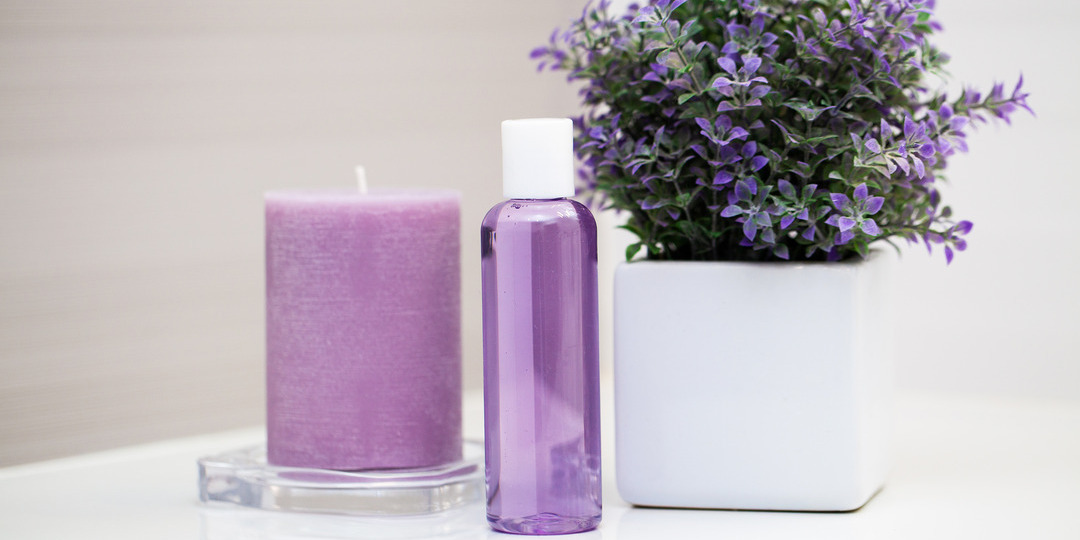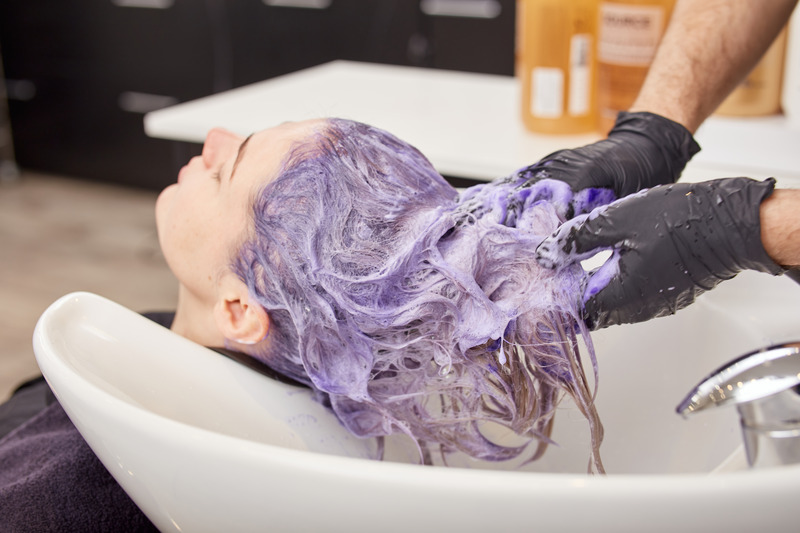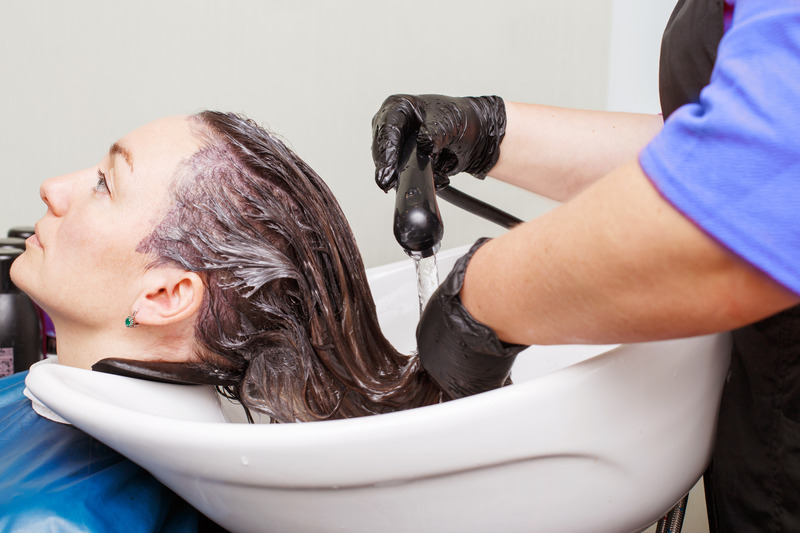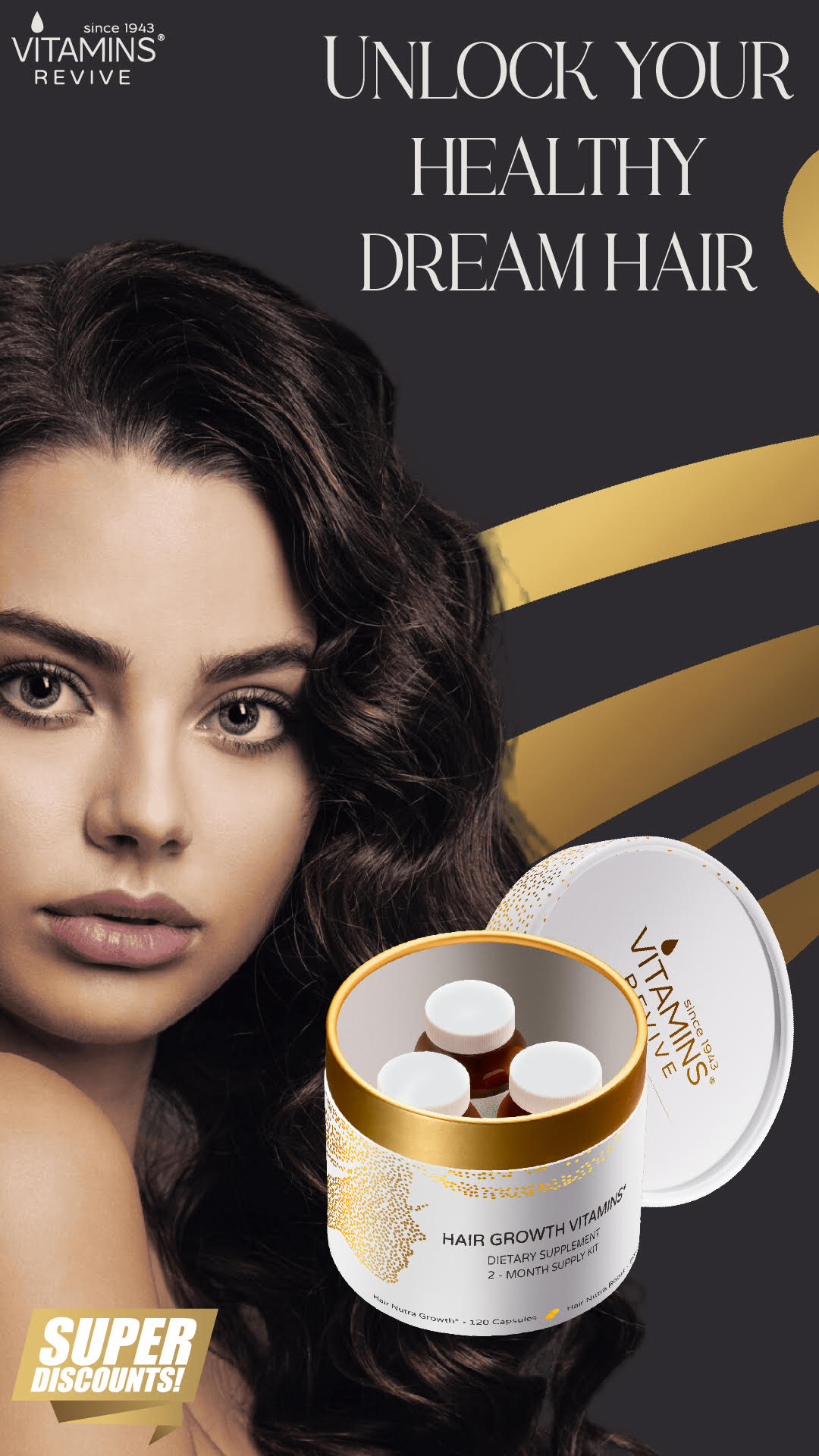
Ridicule and jokes aside, we all love the golden locks that blondes are known for. However, perfect blonde hair is not always manageable. Some have natural blonde locks, while some color their hair, but blonde hair turning yellowish and dull is very common.
Or a hair bleaching gone wrong can result in yellow tones, and that’s where a purple shampoo, purple conditioner, or purple toner comes into your rescue. The good news is that you don’t have to buy commercially priced products and instead opt to make your purple shampoo at home.
What Is Purple Shampoo And How Does It Work?
Purple is the opposite of yellow in the color wheel, so when you want to cancel out the yellow tones in your blonde hair, you use a purple shampoo. Purple shampoos are designed for colored hair with the addition of purple pigment to neutralize the yellow tones in the hair.
What Is a Hair Toner?

With time, lightened or bleached hair turns dull and develops yellow tones. Toning hair helps neutralize these yellow or brassy tones and makes your golden locks lustrous and beautiful again. In other words, a hair toner refreshes your hair and removes brassy tones from blonde locks.
DIY Purple Shampoo Recipe
We’re going to use the antioxidant-rich blueberries for this recipe. Blueberries have an intense purple color, unlike the blue their name suggests. These berries get their color from the pigment anthocyanin, a natural alternative to the chemical purple pigment.
This pigment is not only nontoxic and natural, it’s also rich in antioxidant properties and beneficial for hair and scalp. Let’s take a look at how to make it.
Ingredients
Liquid Castile Soap – 2 Tbsps.
Aloe Vera Gel – 1/4 Cup
Blueberries – 1 – 2 Cups
Instructions
You can take a cup of two blueberries according to your hair length and shade requirement.
The same goes for the aloe vera gel and liquid castile soap. The latter is optional, as aloe vera gel is a cleanser all on its own.
Grind the blueberries and aloe vera gel in your blender for a smooth paste.
You can add liquid castile soap if using and mix well to combine.
Usage
Divide your hair into smaller sections for easy application and clip each section.
Apply on your hair and scalp to cover all the affected strands.
You can clip back each section after applying till you’re done.
Cover your head with a shower cap and let it sit for an hour or as needed.
Rinse off and air dry.
Style as usual.
Notes
You can skip the liquid castile soap if you’re comfortable using aloe vera gel as your cleanser.
The quantities can be adjusted according to your hair length and shade requirement.
You can add a few drops of lavender essential oil if you prefer.
How To Use Purple Shampoo
Purple shampoo can help neutralize yellowish-brassy tones in your hair. You can add purple color to your colored hair-friendly shampoo or prepare your own purple shampoo at home.
Take a sufficient quantity of purple shampoo – it depends on your hair length and type.
Divide your hair into sections to make applying easier.
Apply the purple shampoo on each section, covering your hair strands to the tips.
You can apply it on dry hair or damp hair – go with what you’re comfortable with.
You can apply on the affected areas alone – which means, if your ends are ok, you don’t have to cover them.
Once you’ve covered your entire head, cover it with a shower cap and let it sit for an hour.
Check every few minutes to see any changes, and when you get the desired results, rinse off.
Remember: Too much violet shade left longer can make your hair turn lilac, so don’t let it sit longer than required.
Also, you don’t need to apply shampoo; just rinse it off as it is a semi-permanent dye, and you can wash it off or dilute it by using shampoo.
You can repeat the process or once every two weeks to keep your hair looking fresh and lustrous.
Brand Name Purple Shampoo vs. DIY Purple Shampoo Toner
There are many advantages to preparing your hair products. Let’s compare a brand name purple shampoo and a diy purple shampoo toner here.
Brand-name purple shampoos are pricey and, needless to say, loaded with harsh and damaging chemicals. A diy hair toner or shampoo can be made for a fraction of the cost.
Besides, you can make it with natural and gentle ingredients that are customized according to your needs. A purple shampoo toner can be light to dark purple, depending on the yellow undertones on your hair.
By making your own, you can add just enough purple pigment for it to work on your blonde hair. Whether you buy one off the shelves or make your diy hair toner cum shampoo, it’s not meant for regular use.
You must use it only when needed or to refresh your blonde hair that’s brassy or dull once a week. You can consider your hair toner as an alternative to a salon visit for maintaining your blonde locks that turn brassy or dull and lose luster and shine.
Last but not least, the results will vary with everyone, as no two people are alike. So monitor the results and decide on the right mixture ratios and time to let the hair toner sit on your head.
Extra Tips For Your Hair

- Consider doing a patch test to check for potential allergies and reactions. It’s better to be safe than sorry.
- Prevention is always better, so consider using a hair toner as a maintenance product to keep your golden locks bright and shiny.
- Avoid triggers that can cause brassy or yellow undertones, and use a hair toner to fix it as soon as possible.
- A purple conditioner, shampoo, or toner helps cancel or neutralize yellow undertones, while blue helps cancel or neutralize orange undertones. Choose your color pigment according to the issue and use the color wheel for reference.
- There are very few with natural blonde hair that’s perfect, so either sprucing up your hair for those golden locks or lightening or bleaching your locks to go blonde is something many do. As long as we ensure we avoid damage and maintain hair health.
- Consider using hair masks, deep conditioning massage treatments, herbal hair rinses, and adopting protective hairstyles and styling habits to avoid hair damage.
- Don’t use heat like your blow dryer to dry your hair, instead air dry it. This will help prevent further damage to treated hair due to heat.
Bottom Line
As we always say, DIY is not only a cost-saving endeavor, but it’s also a healthier and natural alternative to going chemical-free where possible and caring for our hair with gentler and nourishing ingredients. Consider trying these natural recipes and practical suggestions that help improve hair and scalp health in the long run.
Don’t have time or the inclination to go DIY? No worries, we have your back with a range of premium vegan hair care cosmetics from Vitamins Revive. You can check out their online store to learn more about their current products.
Please reply with any questions, feedback, requests, or concerns. We love hearing from you.
Let us know how you like our recipes and how they work out. Tweak and customize the recipes to suit your needs and tastes, and don’t forget to try out different variations to identify what you like best.
FAQs
How often can we use the hair toner?
We can use the hair toner when needed – like when your blonde locks start turning yellowish instead of their regal golden shade or when they become dull with time. Ideally, you can use the hair toner once a week to maintain your treated blonde locks and delay salon visits for touch-ups.
When should you use a purple shampoo, toner, or conditioner?
When your blonde locks start turning yellowish, purple pigment can help neutralize it, as it’s the opposite color on the color wheel for yellow. That’s when you use a purple conditioner, shampoo, or toner.
Is a diy hair toner better than store-bought ones?
A diy hair toner is as effective as a commercial toner if we prepare it according to our hair’s requirements. A diy hair toner is also prepared using gentler and more natural ingredients than its commercial counterparts.
Can I use hot water to wash my hair?
Hot water can strip your hair of its natural oils, leaving it dry and vulnerable. On the other hand, using cold water can help close the cuticles and not leave your hair dry or lusterless.









